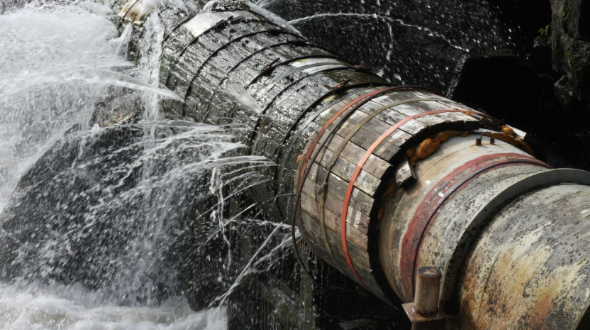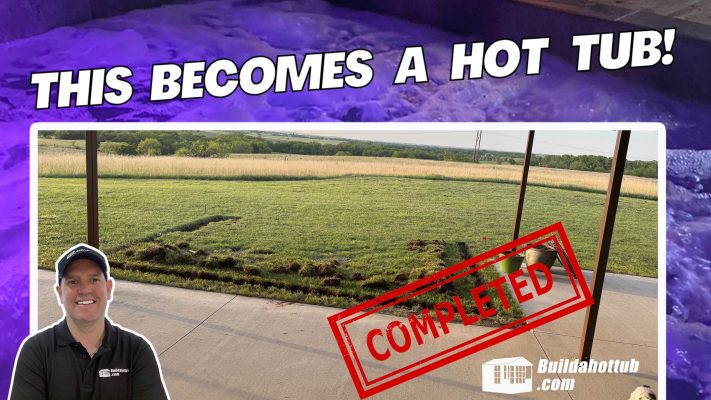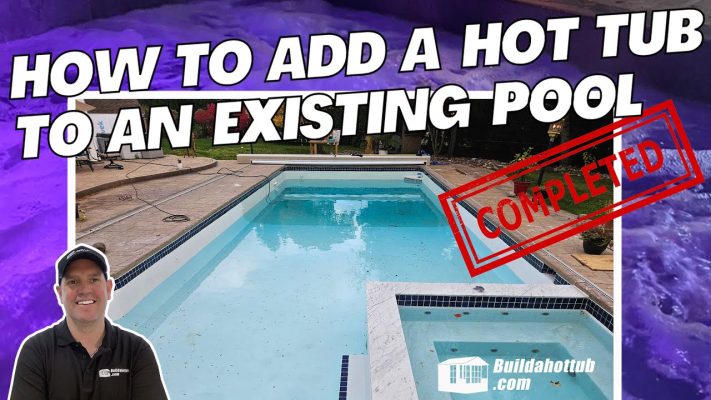Af first, I thought that having to top up the tub up once a week was normal and it was just evaporating. This is not right, you should not have to top it up that often at all. If your water level is dropping, you have a leak. I had a leak, well, actually I had a couple. In this blog post we’ll look at just how to fix them.
The First Leak
The first leak that I had was a constant small leak that came from the bottom of a T join that linked the inlets to the skimmer before they went into the pump feed.
I tried drying it and then using some of the pipe cement, but that was not enough. What I need up having to use was plumbers wet putty which is designed to stop leaks on wet and dry pipes. A chemical reaction allows the putty to set even when things are wet. I went through a couple of tubes of this stuff to get it right but it worked.
The Second Leak
The second leak that I had was for the Ozone. I mentioned that I removed the Ozonator from the system as it wasn’t working, but there were too many weak joints. Anything that is held together with a jubilee clip in a high pressure system like a hot tub is going to leak, and this is what happening. Under high pressure, eg when the jets were on full, the joint were leaking water at a rate of knots.
I decided to lock off the system, drain the excess water from the Ozonator section of the pipework and cut it out. I replaced it was regular water pipe and two 90 degree elbows. Job done, no leaks.
A year on, I probably top up the tub every couple of months and this is because of evaporation and when people are going in and out all the time, the water level does drop, but nothing drastic. It also only takes 10mins to bring it back up to the correct level (middle of the skimmer) with the hose pipe.
Leaks – Learn how to stop leaks in their tracks
Eventually, all hot tub owners have to deal with spa leaks. Finding and fixing them is a breeze, if you know where to look.
Small or hard to find leaks are easily sealed with pour in Seal-A-Leak Sealant. This product frequently seals slow leaks for good. If leak sealant doesn’t do the trick, you have to find the leak first.
Finding leaks
After turning off the power, open the equipment compartment and look for obvious leaks or pooling. On spas with foam-filled cabinets, dig away the soggy foam until you find the leak source.
Another method is to fill your hot tub (with the power off) and let the water drop. Once the water stops draining, examine jets and parts just above the new water level for leaks.
If the water drops to the bottom of the tub, the problem may be a water intake or light assembly
What are the most common leak sources?
Leaks commonly stem from the following areas or parts:
- Pumps
- Heater
- PVC Pipe Connections & Unions
- Valves
- Jets & Manifolds
Pumps
Pay close attention to the pumps. Pumps run under high pressure, and water will leak past worn out seals. Signs of a leaking seal are water under the pump and water spots or rust on the motor.
Changing the seal, wet end, or complete pump assembly is required when a pump seal fails. On older pumps, change the complete pump and motor, rather than just individual parts.
New pumps come with a warranty & new seals. You’ll save much more money vs. buying each part as the other parts fail.
Heater
Heaters leak from plumbing unions, sensors or pressure switches. Rust on the heater tube is a sign of a heater leak.
Leak repair on a heater is as simple as changing the union gaskets or pressure switch. Replace the
heater assembly if it has corrosion or pitting. Those areas will become a leak source in the future.
PVC Connections & Unions
Unions are prone to loosening with vibration and changes in water temp. Hand tighten leaking unions. If they keep leaking, try changing the gasket, O-Ring, or the union assembly.
Tighten hot tub plumbing components by hand only. Since they are plastic, they will break if you use tools.
Glued plumbing parts are more difficult to seal. Try these fixes before cutting out and changing plumbing parts:
- SpaBond Leak Seal Patch Kit. This kit repairs cracks in hard surfaces like PVC and spa shells for good, and installs like a sticker.
- Plast-Aid Acrylic and PVC Repair Kit. This 2-part epoxy kit forms a lasting bond to acrylic and PVC.
- Seal-a-Leak Leak Sealer. This pour in liquid seals minor plumbing leaks. Seal-a-Leak is great to try if you cannot find the source of a leak. Note: Pour in leak sealers cannot cure leaking pump seals.
- PVC Clip-On Pipe Repair. This clever repair snaps onto existing pipes, couplings, and elbows or tees, sealing leaks at joints.
If the leak can’t be repaired with these methods, cut out the leaking plumbing and change the parts.
Valves
Hot tubs use 3 basic valve types: shutoff valves, diverter valves, and air control valves. Shutoff and diverter valves are more prone to leak than air control valves, as they control water flow, not air.
Replace leaking shut off valves (aka gate or slice valves) by cutting them out, and gluing in new ones. These valves stop water flow in order to service equipment without having to drain the spa. For a quick & easy fix, change the valve out for a straight section of PVC and remove the valve entirely.
Diverter valves leak because of worn out or dry O-Rings. Keep valves leak free and working smoothly by greasing O-Rings and any moving surfaces inside with Lube-Tube Lubricant yearly.
Jets & Manifolds
Do you think you have a shell leak? A jet gasket leak is much more likely. Jets have flexible gaskets that seal against the spa shell. Over time, hot tub water breaks down the gaskets, causing leaks.
To fix a jet gasket leak, you’ll need to remove the jet from the spa to access the gasket. The spa shell and jet must be clean before installing a new gasket. Use Silicone Sealant on both sides of the new gasket before tightening the jet to create a better seal.
Jet Manifold damage occurs when water freezes inside the plumbing. SpaBond or Plast-Aid will fix smaller cracks. If the manifold is beyond repair, it has to be changed.
Start by cutting out the manifold and any elbows attached to it. Replace the parts and glue everything back into position.
Shell Cracks
While it is rare the spa shell itself would leak, it is possible. Most blisters or surface cracks in the acrylic layer of the shell are only cosmetic, and rarely cause leaks.
To repair surface cracks, drill a small hole (1/16” or less) on either end of the crack to prevent spreading. Thoroughly clean the surface around the crack, and apply either a Spa Bond patch , or, for larger cracks, Plast-Aid.
Leak Prevention
An ounce of prevention is worth a pound of cure. Keep an eye out for leaks on a regular basis. Fixing leaks right away makes repairs much easier.
At every water change, open the equipment cabinet and look for signs of water. Double-check all unions. Are they tight and dry?
Pay special attention to the pump. Watch out for any signs of water on the motor, such as rust or water spots. Signs of water on the pump or motor is commonly the result of a leaking seal.
Keep spa water properly balanced and sanitized. Low pH and high bromine/chlorine levels cause equipment problems and leaks over time.
Content Credit – spadepot.com
Can I Help You?
If I can help you in any way I would love to hear from you. You can get in touch using the form below.
Thanks - Andi
 Hi, Andi here. I own Buildahottub.com and also write all of the articles and info pages on the site. Some years back now, I built my own hot tub but struggled to find the information I needed. So, once my tub was complete, I started this website to help others in their own pursuit of hot tub and plunge pools DIY building information.
Hi, Andi here. I own Buildahottub.com and also write all of the articles and info pages on the site. Some years back now, I built my own hot tub but struggled to find the information I needed. So, once my tub was complete, I started this website to help others in their own pursuit of hot tub and plunge pools DIY building information.
Fast forward to 2025, I've helped over 1400+ DIY customers just like you all over the world build hot tubs and pools. Have a good look around the site, there are lots of resources here. Please do get in touch if I can help you. - Cheers, Andi










